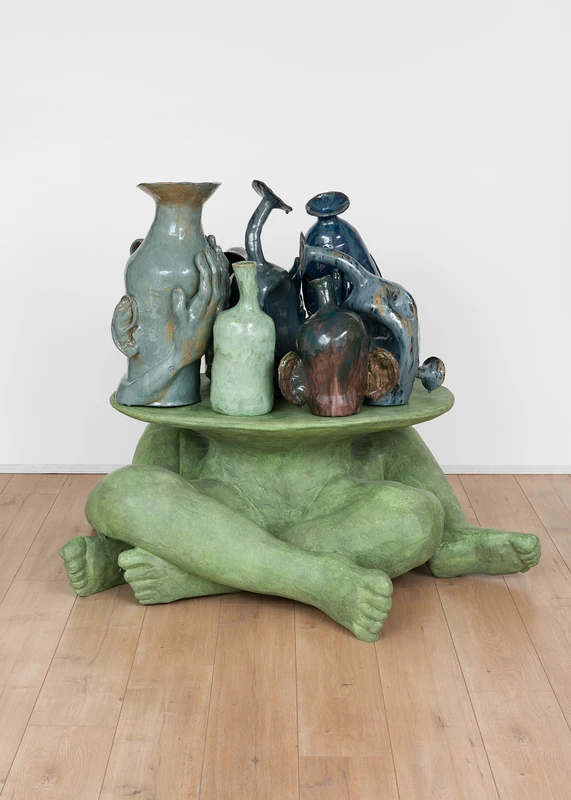Woody De Othello: Faith Like a Rock
8 Mar-15 May 2024
PV 7 Mar 2024, 6-8pm


Stephen Friedman Gallery presents 'Faith Like a Rock', the first solo exhibition in the UK by Woody De Othello.
Othello (b.1991, Miami, USA) is best known for a multidisciplinary practice that encompasses sculpture, painting and drawing. Working across a range of mediums—including glazed ceramic, carved wood, bronze, ink and oil paint—Othello transforms everyday objects into anthropomorphic, animistic vessels. His colourful, assembled sculptures appear as animated, sentient objects, while his lush painted landscapes teem with life.
In his debut exhibition at Stephen Friedman Gallery, Othello creates an immersive installation that expands upon earlier motifs and represents a bold evolution in his artistic cosmology. Inspired by the domestic objects, flora and fauna of his immediate surroundings, he recasts them as humanoid characters whose features are as recognisable as they are uncanny. Vessels sprout appendages such as ears and mouths, while exaggerated hands shield invisible eyes. They stand alone or huddled in groups, precariously stacked atop an array of entangled legs that bend, kneel, twist and fold. Occasionally a household curio appears: a hollowed-out mirror revealing the silhouette of a face, a hammer melting over a platinum-glazed steam iron, or a pair of chess pieces inflated to the size of a cat.
The exhibition unfolds as a series of mise-en-scène with each room transformed into a unique environment. In one room, sculptures float on a trio of rafts made from shipping palettes. Kneeling figures inspired by the prostrate bodies seen across ancient religious statuary—from Djenné-Djeno's famous seated figures to Egyptian depictions of pharaohs—are joined by a congregation of vessels aptly titled the healers gathered around (2023). Atop this base of criss-crossed legs, several vessels are arranged, featuring rich blue, green, and grey elongated faces. Instead of facing the viewer, the figures huddle inward. A pair of falcons perch on another buttress of limbs, a reference to the Yoruba belief in a divine force connecting earth to the spirit world as well as the ancient Egyptian god Horus often depicted as a falcon-headed man.
In the following room, flaming red walls and deep crimson flooring set the stage for Divine Support (2024) and Direct Line (2024). The sculptures stand tall with four arms branching outward to the heavens as if summoning a gathering or prayer. The tone shifts again to one of hushed reverence in the final room painted in teal. A procession of ceramic sculptures advances along a lengthy church bench. Along the walls, jewel-toned flowers and enchanted forests dance across canvas and paper, joined by a series of ink drawings depicting a tangle of trees, plants, bodies and birds.
Integral to Othello’s practice is a deep engagement with clay and its connection to place and ancestry. Rejecting Western cultural beliefs in the hegemony of humans over nature, the artist turns to pre-colonial rituals and precepts that reassert the rights of nature. Clay becomes a conduit to the past and a path to healing. From the nkisi of Central Africa—animistic power objects imbued with sacred energy and used for spiritual protection—to the Indigenous Dagara cosmology of sub-Saharan Africa, Othello embraces the regenerative power of the material. As the artist recalls, “I remember having this overwhelming feeling that everything I needed to know about my past and future was beholden to clay.” In ‘Faith Like a Rock’, Othello performs visual alchemy. This once humble material becomes a potent cipher for radical, sustainable transformation.
Woody De Othello press release
Download